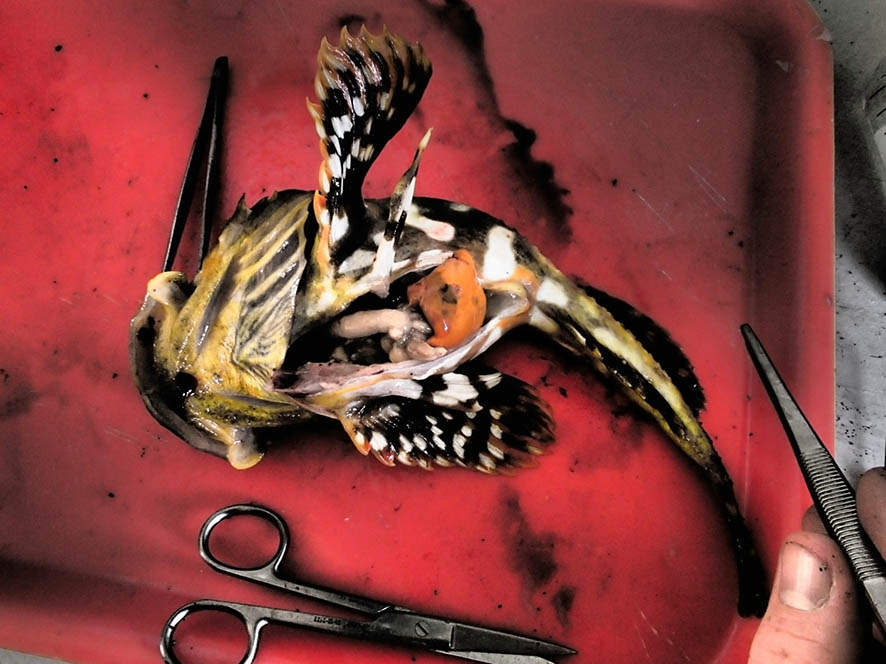As a PhD student from the University of Gothenburg researching gastrointestinal motility and blood flow in fish, you may wonder how did this man arrived in Greenland on a Forbio marine field course!! Well, let me explain……..
Gastrointestinal motility and blood flow in fish can be affected by a range of abiotic (e.g. temperature) and biotic (e.g. diet) factors. As part of my doctoral research I video record the movements of the gut and produce spatio-temporal maps allowing me to qualitatively and quantitatively characterize gut motility patterns in vivo in fish. Using this method I want to investigate the effects of diet and temperature on gut motility patterns in a fish species called shorthorn sculpin (Myoxocephalus scorpius). However, before I can experimentally test the effects of different compositions of fats, proteins and carbohydrates in food on motility patterns I need to know the natural diet of these animals…….and thus, much to my joy and excitement, we arrive at Disko Island, one of the more northern areas in the geographical distribution of shorthorn sculpin!!!
Due to strict luggage regulations I was unable to bring my ultimate sculpin-catching device (fishing rod) and instead had to arm myself with a 50 DKK handline from the local supermarket, which made things increasingly difficult (that was my excuse anyway!!). After numerous failed attempts at a range of beautiful locations, my total catch included a piece of seaweed, 4GB of wicked photos, no hooks and sinkers left, and my pride was taking a severe dent as people were now sarcastically referring to me as the ‘master fisherman’. Eventually through a combination of the stars aligning and the purchase of a ‘lucky hook’, the fish started biting….hallelujah!!!! After the slightly messy business of extracting the stomach contents from the individual fish back at the lab, it was time to identify what these animals feed upon.
Luckily for me there was an abundance of excellent taxonomists on the course to help me identify the semi-digested prey items. Thus without further ado……. they feed upon pretty much everything they could get their ‘hands’ on!!!!! This included gastropods (Littorina saxatilis, Littorina obtusata, Margarites groenlandicus), polychaetes (family Glyceridae), amphipods (fam. Caprellidae and Gammaridae), chitons (fam. Leptochitonidae), molluscs (Mytilus edulis), shrimp (Pandalus borealis) and big blocks of nicely cut up seal blubber (which was the bait of choice!!).
Thus in conclusion……shorthorn sculpin are opportunistic feeders and will utilize a range of different prey items to satisfy their metabolic demands. Now that I have arrived back in Sweden, armed with new skills and knowledge on invertebrates, I would like to do a similar study on the shorthorn sculpin residing on the west coast of Sweden to compare differences in diet of the two different populations, which will make up an integral part of my PhD thesis.

Not a sculpin…but a halibut!!!…..a predator of the sculpin as we found a whole sculpin inside the stomach!!!!
All in all it was an amazing adventure which I will not forget and I strongly advise any students to take part in future courses!!!!!!!
Signing out……..Jeroen Brijs (Gothenburg University)



